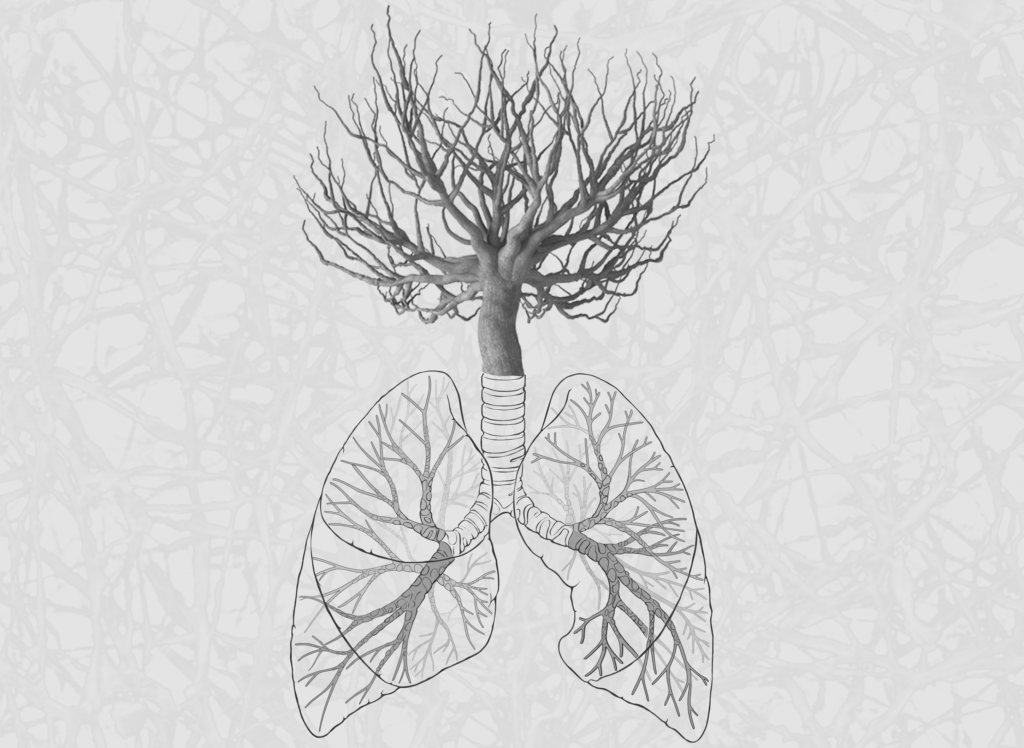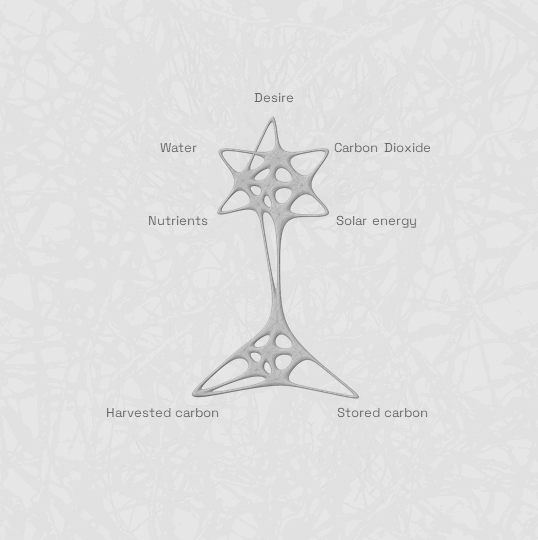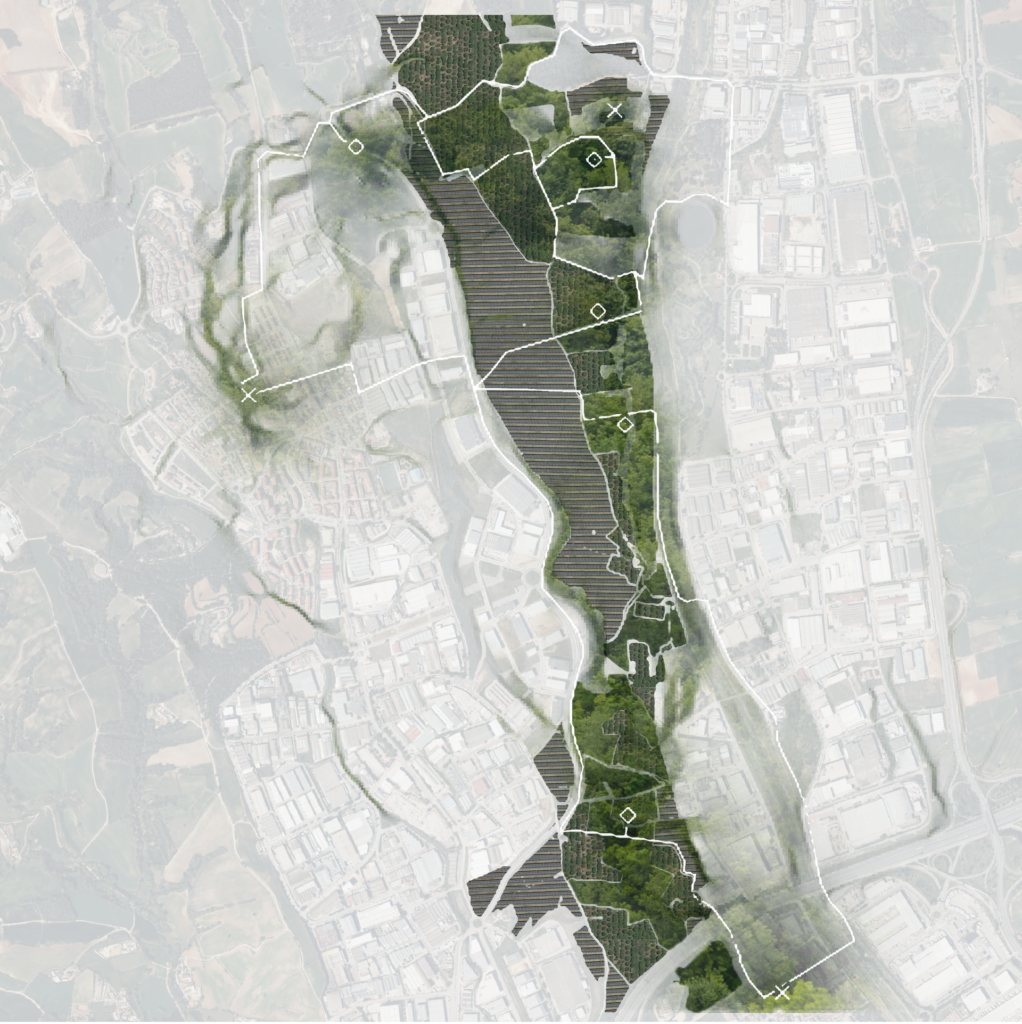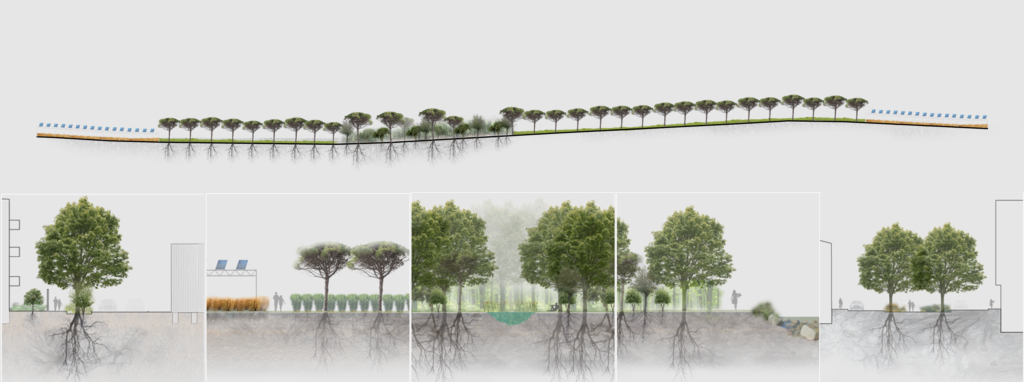Introduction
The contemporary postcard city of Barcelona is supported by a world wide web of hidden urbanization. One of the closest and most prominent hidden pieces of urbanization of Barcelona is found in the Besós Valley. When going on site, we encountered a fragmented urban landscape of logistical infrastructure, urban wasteland, scattered agriculture and haphazard domesticity. In our initial investigations we discovered that this fragmentation also extends below ground. A healthy soil is connected by vast mycelium networks. We discovered that the fungal disconnectivity caused by the semi-urban condition of the valley hinders the capability of soil to capture carbon, retain water and support a diverse natural ecosystem.
Theoretical framework
In order to avoid an overly anthropocentric approach, we chose to adopt the terminology of desiring machines from Deleuze and Guattari. Instead of addressing an antagonistic dialog between people and nature in the valley, we chose to see all of the actors as desiring machines. The advantages of this conceptual change can be illustrated by comparing a pair of human lungs and a tree root system. Both are linear systems for transferring particles from one place to another. Despite their similar function, one in considered on the edge of a plant, the other inside a body. Dissolving these arbitrary definitions allows us to rethink where “we” starts and ends. What if we are the valley? A valley that is experiencing a delirium from being dismembered and severed? What if we could reconnect?

Deploying this theoretical framework we started to look at the machine of the valley. When plants perform photosynthesis they store carbon in a variety of ways. Some carbon is stored in compound sugars, other carbon in the organism of the plant and yet other carbon is exchanged for nutrients with fungal exchange networks in the soil. Interestingly, plants do not all assign the same amount of carbon to the same processes. Some plant species store more in the form of compound sugars, others store more in the soil. In the Besós Valley, the choice is made in a very clear way in favour of agricultural output of barley and alfalfa. A monoculture is maintained by weeding and tilling the fields and by the use of pesticides until the crop is harvested. The constant resetting of the soil condition prevents the growth of an effective mycelium network for nutrient exchange. As an effect, the capabilities of the soil to capture carbon are hindered.

In contrast with the rest of Spain, the agricultural sector of the Besós Valley makes a negligible contribution to the local GDP. Despite this fact, it is the largest consumer of land. In this context, we see an opportunity to reimagine what the valley could be and how the land machine can be deployed in alternative ways to achieve new outcomes.
Multiperformance
Design question: How can the machine we call the Besós Valley be reprogrammed to become more multi-performative, benefitting both humans and non humans?
Based on the initial investigation, the key method that we deployed to achieve multi-performativity was the increase of the fungal connectivity of the valley.

The valley is located between two densely forested mountain ranges. The objective therefore became improve the connection between these two poles of thriving fungal activity. Based on a hypothetical situation where we transformed all agricultural land in the valley into forest we were able to select strategical corridors where a minimal intervention would make a maximum difference to the flow of mycelium from one pole to the other.

In the next design step we went in to closer detail. We did so by implementing three typologies that together make up the corridor: food forest, agroforestry and agro-photovoltaic farming. The typologies have different advantages and disadvantages when it comes to mycelium resistance and economic profitability. For this reason we chose to work with a gradient building up to the spine of the corridor where the food forest provides the core fungal connection. This spine is funded by investments in highly profitable agro-voltaic fields along the edge of the corridor.

The final step in the implementation of multi-performative machine was to anchor the project in the public consciousness. In this way, the desire for multi-performance becomes the fuel that drives the machine. Concretely, our proposal is to create a network of green paths that plugs into the network of fungal corridors that we have established. The paths connect the urban centres of the valley with the green spines. Along the way, a series of green pockets are curated to allow for moments of contemplation.


Reimagining the Valley
Our proposal involves reprogramming the valley into a multi-performative machine, prioritizing mycelium networks’ crucial role in ecological health. Shifting from conventional agriculture to a blend of food forests, agroforestry, and agro-photovoltaic farming, our approach considers mycelium resistance and economic viability.
Beyond physical changes, we advocate for a network of green paths linking urban centres and established fungal corridors. This not only manifests our multi-performative vision but also fosters public awareness.
As we reimagine the Besòs Valley, the desire for multi-performance becomes a cultural shift, anchoring the project in the public consciousness. This proposal invites us to redefine our relationship with the environment, envisioning a sustainable future where urban life harmonizes with the natural world. In transforming the Besòs Valley, we glimpse the broader potential for ecological resilience in our contemporary cities.

